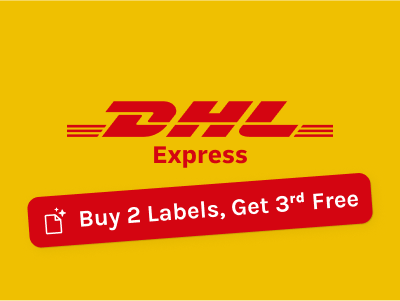If you’re working towards being a successful small business owner in online commerce but are wary of dealing with physical inventory, eCommerce dropshipping might be the best option for you. The world of eCommerce is an exciting one and even after starting off by engaging in dropshipping, you can still go on to own your own stock, either by wholesale purchases, creating your own branded products or manufacturing.
What is Dropshipping?
Dropshipping is a method of supply chain management in which a retailer doesn’t keep a physical product inventory but rather transfers a customer’s orders directly to a wholesaler, manufacturer, or another retailer who then ships the products to the customer.
This essentially means that the products you sell to customers come from a third party that ships directly to them. Online retailers neither see nor handle products when using dropshipping.
So how does dropshipping work compared to owning your own stock? In comparison to standard retail store owners, you as the selling merchant don’t stock or even own an inventory. In order to fulfill orders, you liaise with a manufacturer, wholesaler, or even another retailer to have the ordered items shipped to your waiting customers, contrasting with the model of owning your own stock in warehouses and fulfilling and shipping orders directly.
What Are the Pros and Cons of Dropshipping?
Just like every other business model, dropshipping comes with its own fair share of advantages and disadvantages. Let’s start by looking at the advantages of dropshipping in eCommerce:
Pros:
- Low Risk: It’s great to play safe, making it a solid choice for businesses just starting off in online retail and those taking a more cautious, conservative approach to eCommerce. With dropshipping, the risks of running an online business are minimal as you can avoid challenges like personally picking, packing, and shipping products and the high overhead costs that come from owning your own stock.
- Minimal Startup Capital Required: Considering the fact that dropshipping products does not require investing in inventory before you start selling, it requires minimal capital to engage in this business model.
- Easy to Manage: With dropshipping, you have no business with physical products and as such, there is no need for you to rent and manage a warehouse, pack and ship orders or deal with staffing issues, as all these are left to a third party.
- Remotely Operated: You can operate your dropshipping business from anywhere as long as you have a strong Internet connection for effective communication with your customers and third-party suppliers, retailers or manufacturers.
Other advantages of using a dropshipping service include having a wider selection of products to choose from, less stress from having to directly manage an inventory, and a seamless customer fulfillment process.
Cons:
Dropshipping also comes with its own downside and some of the disadvantages include, but are not limited to, the following:
- Third-Party Errors: Occasionally, errors may occur on the part of the suppliers, manufacturers, or other retailers you’ve utilized for dropshipping. When this happens, you have no choice but to take responsibility and apologize to your customers. From missing items to low-quality packing, delayed deliveries, and botched shipments, you should be ready to sort any errors out as quickly as possible.
- Lower Profit Margins: Whether it’s Amazon dropshipping, Shopify dropshipping, eBay dropshipping, or another service, merchants’ profit margins are generally lower since you are selling products from a third party. In order to make a significant profit, you need to maintain recurring sales in the highly-competitive world of eCommerce.
- Minimal Assurance on Inventory Flow: The control of inventory lies with the third party and as such, certain products might not be available when they’re requested by your customers. This often leads to retailers accepting orders for items that are not currently available.
- Lower Barriers To Entry: A lot of people are catching up on this eCommerce retail model, especially because it requires minimal capital to start. Based on this, the competition is very high as a lot of online retailers find themselves selling similar items.
What is Inventory?
At its core, inventory is a stock of products that you have on hand ready for sale. These are usually finished goods that are stored in a place from where they can easily be shipped to customers. Technically, inventory is an accounting term that is used to quantify how much product stock a business has; if you're an eCommerce retailer, your inventory will probably be your biggest asset.
It's important to regularly do inventory so that you can properly handle all related aspects of your business such as ordering, shipping, and handling. By carefully managing your inventory, you'll be able to set targets and develop a system for stock replenishment.
{{ find-your-perfect-fulfillment-partner-with-expert-help }}
What Are the Pros and Cons of Having Inventory
Like dropshipping, having your own inventory comes with a list of pros and cons. Here's what you should consider.
Pros:
- Better Customer Service: By keeping your own products in store, you cut out any middleman and can therefore provide better service to your customers. You'll also be able to keep tight quality control measures and won't be caught by any surprises by customer complaints.
- Bulk Discounts: Your suppliers and manufacturers will be able to offer more significant discounts if you order more products. It's always smart to order a bit more than you think you'll need so that you can access these lower prices - if you end up with excess stock, you can always find a creative way to get rid of it without hurting your bottom line.
- Provided a Branded Experience: By dealing with inventory and orders yourself, you can pack them exactly how you want when you prepare orders for your customers. That means you can offer a 360-degree brand experience with branded packaging - if you use Easyship, you can even provide customized packing slips and tracking pages! Additionally, you can put in special discounts, treats, or offers into your package to build a better relationship with your customers and encourage them to buy from you again.
Cons:
- You Need Space: Having an inventory of your products on hand means you'll need somewhere to store it. This could mean you'll need to find dedicated space in your home or office. If you have a large inventory, you might even need to find a warehouse or storage space to keep your products, which means you may incur extra costs.
- It Involves More Work: Having and managing your own inventory is very involved. You have to stay on top of stock levels, manage the planning, ordering, and deliveries, for example. You'll probably also have to handle packing and shipping; while Easyship can make this much easier for you, it does mean it's something else you have to think about and do!
- The Cash Outlay: To have inventory, you'll first have to spend a significant enough of cash to buy it. This may not always be feasible if you're just starting out in eCommerce.
Choosing Between Dropshipping and Inventory
Obviously, dropshipping and inventory both have advantages and disadvantages. That's why they won't work for all businesses. If you're deciding which method to use for your online store, here are a few things to consider:
- Do you have capital? Stocking inventory means having ready cash to purchase products for your store. If you have this, you could begin creating your own stock; but, if you don't have this ready to go, then dropshipping will be easier to start with.
- Do you have a lot of time? Keeping your own stock of products requires a much more significant time investment than dropshipping. Not only will you need to deal with managing and ordering stock, but you'll also have to deal with packing and sending customers' orders. All of this takes time. If you would prefer someone else to handle all the heavy lifting, dropshipping can be a better choice.
- How concerned are you with quality control? With dropshipping, you have to trust that your suppliers will provide good products and that they'll deal with your orders properly. If you prefer to have more control over this - and subsequently, over how satisfied your customers are with your business - it might make more sense to have your own inventory and manage everything yourself.
How to Transition from Dropshipping to Owning Your Own Stock
After carefully considering the pros and cons of dropshipping, you may now feel ready to transition from dropshipping to owning your own stock. Whether you want to create your own branded products or aim to buy products from a manufacturer, here are some steps to help make an easier transition:
- Develop the initial design of your product
- Conduct thorough market research
- Find a source for manufacturing if you opt against creating the products on your own
- Develop a business plan and create a budget
- Develop your unique product line
- Develop effective product packaging
- Adopt distribution channels and a logistical plan
- Differentiate your brand from competitors
- Develop and utilize a solid marketing strategy to introduce your new products
- Keep your website and social media accounts up to date with fresh content
- Maintain superior customer fulfillment compared to competitors
How Easyship Can Help
In order to make your transition from dropshipping to owning your own stock as seamless as possible, Easyship offers a wide variety of reliable and affordable shipping options to help you to fulfill customers’ orders all year round.
With access to many countries around the world, Easyship offers access to a global marketplace and highly competitive shipping rates. This, in turn, maximizes your profit margins and can give your business a significant boost while also breaking down barriers to global eCommerce, making it easier to own your own inventory and ship around the entire world.
Our shipping rates calculator can also be very useful in determining the full cost of your shipping and fulfillment operations while our useful guides to international shipping and duties and taxes are a great way to arm yourself with critical information as you prepare to take control of your own stock and potentially begin shipping cross-border.
Conclusion
Dropshipping is a great business model and an amazing opportunity for those who are trying to break into the eCommerce world. However, moving in the direction of owning your own stock can significantly increase your profit margins and better control your inventory flow.
Easyship stands at the ready to help your eCommerce business transition from dropshipping to owning inventory as your company scales and grows to exciting new levels.
{{ dont-miss-the-key-steps-to-fulfillment-success }}















































.svg)
.svg)






.avif)
.avif)

.avif)
.avif)


.avif)


.avif)










.avif)
.avif)



.avif)
.avif)


.avif)
.avif)


.avif)



.webp)







.svg)





.webp)